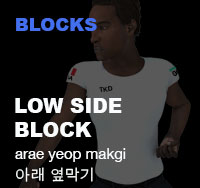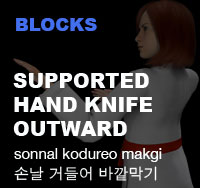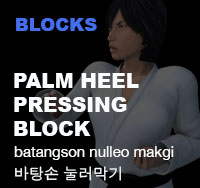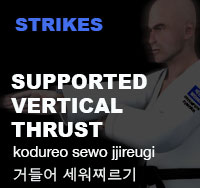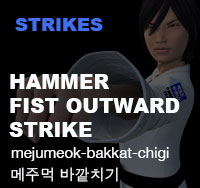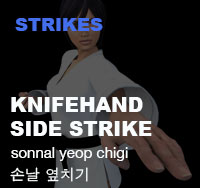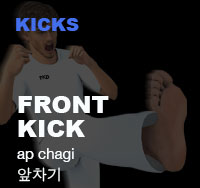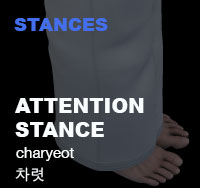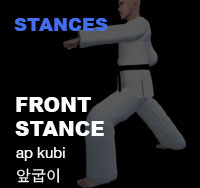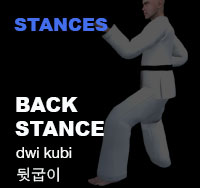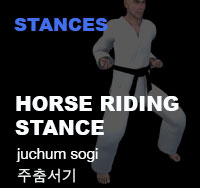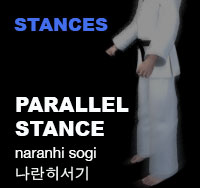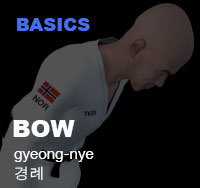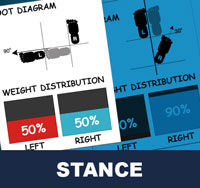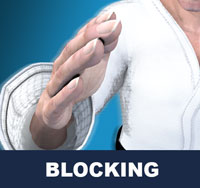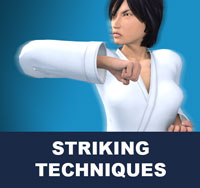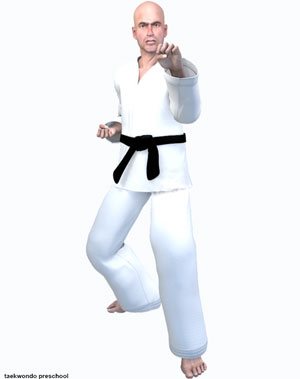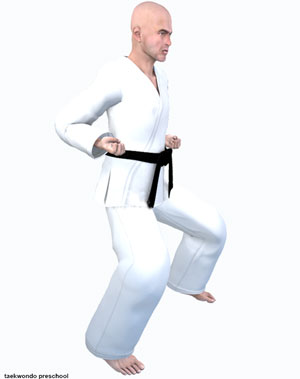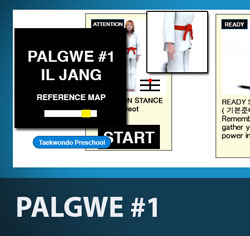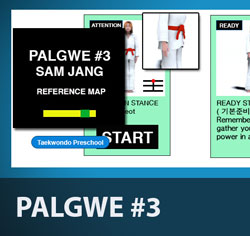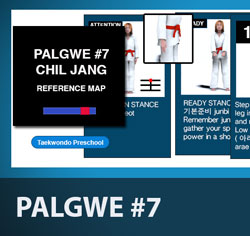Taekwondo 태권도Taekwondo Preschool
Promotion from one geup to the next can proceed rapidly in some schools, since schools often allow geup promotions every two, three, or four months. Students of geup rank learn the most basic techniques first, and then move on to more advanced techniques as they approach first dan. Many of the older and more traditional schools often take longer to allow students to test for higher ranks than newer, more contemporary schools, as they may not have the required testing intervals. View Taekwondo belt levels »
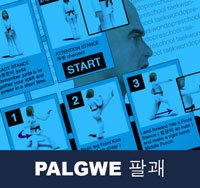
Palgwe #4 Sa Jang
Poomse is the foundation for the teaching of Taekwondo. A poomse, or form, is a detailed pattern of defense-and-attack motions and techniques used in traditional martial arts. Poomse is useful in developing proper kinetics, mental and physical fortitude.
This trigram represents Thunder. Also, the trigram is strongly connected to northeast and the relationship of the Eldest son. Thunder comes from the sky and is absorbed by the earth, thus, according to the beliefs of the I Ching, thunder is one of the most powerful natural forces. This poomse is associated with power and the connection between the heavens and earth. This poomse is intended to be performed with power resembling the Thunder for which it is named.
The Palgwe forms are a slightly older, somewhat similar supplemental group of World Taekwondo (WT) poomse. There are eight Palgwe forms that also represent eight trigrams from I-Ching. Palgwe poomse were used from 1967 to 1971. Taegeuk poomse have been in use from 1971 to the present time. Kukkiwon states that Palgwe poomse have been eliminated though some schools still teach them.
Training Methods
How well one improves with training depends on several factors, such as the frequency it is engaged in, and the type of feedback that is available for improvement. If a student does not train often enough, reinforcement fades, and he or she is likely to forget what was learned for the poomse.
When learning the poomse, it is helpful to use mirrors to observe your techniques and fix your mistakes immediately. Initially, a student may need focused feedback from a certified Master Instructor ( 사범님 sabeomnim ); however, as they progress, they must develop the ability to self-assess the poomse.
Difficulty of Poomse
Taekwondo students of geup ranking learn the most basic techniques first, and then move on to more advanced and difficult techniques as they approach 1st Dan Black Belt. The more difficult the techniques, the more practice may be needed for the purpose of improving or mastering it, as in the phrase 'practice makes perfect'. Every poomse must display the requisite speed, balance, power and firmness to be realistically used as an attack or defense move.
* Please see a certified Master Instructor ( 사범님 sabeomnim ) for training. Proper guidance and instructions are needed to ensure safe training.
Techniques Included in this Poomse
Both basic and advanced taekwondo techniques can be contained within a single pattern and the higher the level of the practitioner, the greater the difficulty of the techniques and the complexity of the pattern. Remember a poomse is a detailed pattern of defense-and-attack motions and techniques used in traditional martial arts. View more information Poomse »
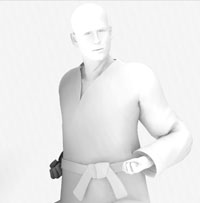
Training Safety Precautions
Overtraining can be described as a point where a person may have a decrease in performance and plateauing as a result from failure to consistently perform at a certain level or training load exceeds their recovery capacity. They cease making progress, and can even begin to lose strength and fitness. Overtraining is also known as chronic fatigue, burnout and overstress in athletes.
It is important to note the difference between overtraining and over-reaching; over-reaching is when an athlete is undergoing hard training but with adequate recovery, overtraining however, is when an athlete is undergoing hard training without the adequate recovery. View Overtraining »
* Please see a certified Master Instructor ( 사범님 sabeomnim ) for training. Proper guidance and instructions are needed to ensure safe training.

General qualities that judges look for in any taekwondo practitioner include proper breathing technique and body control. The diaphragm must be engaged in deep breathing, shallow breathing concentrated in the upper abdomen results in raised shoulders and stressed muscles. The muscles of the body should be lightly relaxed in order to perform the pattern with fluidity, speed and grace. Muscles should only be tensed at the moment of imaginary impact in order to commute maximum power to any individual taekwondo technique. For more information View Key Points »
RESOURCES
This article uses material from the Wikipedia articles "Taegeuk" and "Hyeong", which is released under the Creative Commons Attribution-Share-Alike License 3.0.




